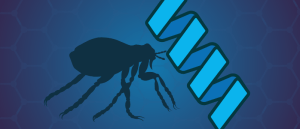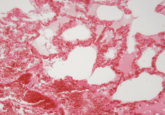Getting biodiversity insights from thin air

Shotgun sequencing of airborne eDNA provides insights into biodiversity, genetic diversity and pathogens.
Researchers at the University of Florida’s Whitney Laboratory for Marine Bioscience (FL, USA) have used shotgun sequencing of airborne environmental DNA (eDNA) for non-invasive biodiversity, genetic diversity and pathogen assessments. The approach takes as little as 2 days from sample collection to complete analysis.
Biodiversity is declining at an unprecedented rate. Effective tools are needed to monitor biodiversity, including distribution shifts, and capture and record genetic diversity before it’s lost. eDNA is useful for this, as samples can be taken with limited disruption to environments.
“The level of information that’s available in environmental DNA is such that we’re only starting to consider what the potential applications can be, from humans, to wildlife to other species that have implications for human health,” commented corresponding author David Duffy.
Soil and water are common sources of eDNA, but the researchers wanted to investigate another source: air. The air itself is infused with genetic material, and an air filter can pick up genetic material from nearly every species that grows or passes nearby.

Antibacterial nano-coatings derived from insect protein
Resilin-based antibacterial nano-coatings can completely block bacteria from attaching to a surface.
Advances have been made in air eDNA biodiversity research, but it has focused on metabarcoding, which provides information for a selected set of species. In this study, the researchers took a whole-genome sequencing approach for metagenomic samples, known as shotgun sequencing.
The team ‘vacuumed’ up eDNA from the air in a variety of locations using simple lab equipment and an air filter. They used both long- and short-read sequencing, coupled with established cloud-based biodiversity pipelines, to enable a 2-day turnaround from airborne sample collection to complete analysis by a single investigator.
“When we started, it seemed like it would be hard to get intact large fragments of DNA from the air. But that’s not the case. We’re actually finding a lot of informative DNA,” Duffy said. “That means you can study species without directly having to disturb them, without ever having to see them.”
The approach picked up signs of hundreds of pathogens from a sample of air from Dublin (Ireland), and even traces of cannabis and magic mushrooms, suggesting the technique could be used to track emerging diseases.
Samples of air from a forest in Florida enabled the researchers to identify the origin of bobcats and spiders, highlighting that the technique could be used to track endangered species and identify where they came from.
Shotgun sequencing of airborne eDNA has the potential to be a powerful tool for monitoring biodiversity. However, it may also unearth sensitive human genetic data, so Duffy and his collaborators have called for ethical guardrails for the rapidly developing field of eDNA.





